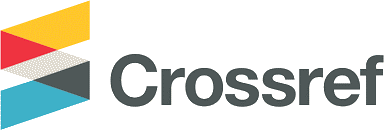Journal of Materials Exploration and Findings
Abstract
One of the key challenges in asset integrity management system at offshore platform is the lack of visibility regarding performance issues and program effectiveness. Without proper performance measurement systems, it becomes difficult to address positive or negative trends promptly and for management to stay informed about the status and the impact of the inspection program. Therefore, Key Performance Indicator (KPI) is needed to measure inspection program effectiveness to prevent undesirable equipment failures that could lead to Loss of Primary Containment (LOPC) or Process Safety Event (PSE). The developed KPI is the ratio of the number of non-leak inspection findings with a remaining life of less than 3 years to the total number of all anomalies with a remaining life of less than 3 years, including leak findings. By applying this KPI, inspection program effectiveness for an offshore field was monitored and improved firmly from 29% in 2018 to 82% in 2023, with some fluctuations in performance before achieving a strong recovery in later years.
References
Adelia, N L T, Munir, B & Soedarsono, J W 2024, ‘Inspection Planning of Subsea Pipeline Using Risk-Based Inspection,’ Journal of Materials Exploration and Findings, 3(2), pp. 75-84.
American Petroleum Institute 2016, API 574: Inspection Practices for Piping System Components. 4th edn. Washington, D.C.: API.
American Petroleum Institute 2023, API 580: Risk-Based Inspection. 4th edn. Washington, D.C.: API.
American Petroleum Institute 2014, API 570: Piping Inspection Code: In-service Inspection, Rating, Repair, and Alteration of Piping Systems. 4th edn. Washington, D.C.: API.
American Petroleum Institute 2014, API 510: Pressure Vessel Inspection Code: In-service Inspection, Rating, Repair, and Alteration of Pressure Vessels. 10th edn. Washington, D.C.: API.
American Petroleum Institute 2014, API 653: Tank Inspection, Repair, Alteration, and Reconstruction. 5th edn. Washington, D.C.: API.
Fang, F, Ding, L, Yu, K, Zhang, L & Lu, H 2023, ‘Technological advancements in field investigations of marine microorganisms: From sampling strategies to molecular analyses,’ Journal of Marine Science and Engineering, 11(10), p.1981.
Gbagba, S, Maccioni, L & Concli, F 2024, ‘Advances in machine learning techniques used in fatigue life prediction of welded structures,’ Applied Sciences, 14(1), p.398.
International Association of Oil & Gas Producers 2016, Standardization of barrier definitions: Supplement to Report 415. Report 455.
International Organization for Standardization 2014, ISO 55002:2014: Asset management – Management systems – Guidelines for the application of ISO 55001. ISO.
Kurtz, R S 2020, Piper Alpha and Deepwater Horizon - Coincidence of Causation or Failure of Lessons Learned.
Raja, V S 2022, ‘Grand challenges in metal corrosion and protection research,’ Frontiers in Metals and Alloys, 1.
Sutton, I 2017, ‘Inspection,’ in Plant Design and Operations. 2nd edn. Elsevier, pp.335-352.
Sulistomo, T R & Surjosatyo, A 2023, ‘Risk-Based Inspection of Crude and Refined Oil Storage Tank in Indonesia Refinery Plant,’ International Journal of Mechanical Engineering Technologies & Applications, 4(1), pp.84-96.
Tiggor, T P & Riastuti, R 2022, ‘Risk Management of Carbon Steel Piping in Sweet Environment Multiphase Fluid Production,’ Journal of Materials Exploration and Findings, 1(2), pp.69-85.
Recommended Citation
Haekal, Teuku Ahmad; Soedarsono, Johny Wahyuadi; Munir, Badrul; and Sholihin, Muhammad Yudi Masduky
(2024)
"Inspection Program Effectiveness Key Performance Indicator for Pressurized Static Equipment Integrity at Offshore Platform,"
Journal of Materials Exploration and Findings: Vol. 3:
Iss.
3, Article 4.
DOI: 10.7454/jmef.v3i3.1073
Available at:
https://scholarhub.ui.ac.id/jmef/vol3/iss3/4
Included in
Operational Research Commons, Other Engineering Science and Materials Commons, Risk Analysis Commons










